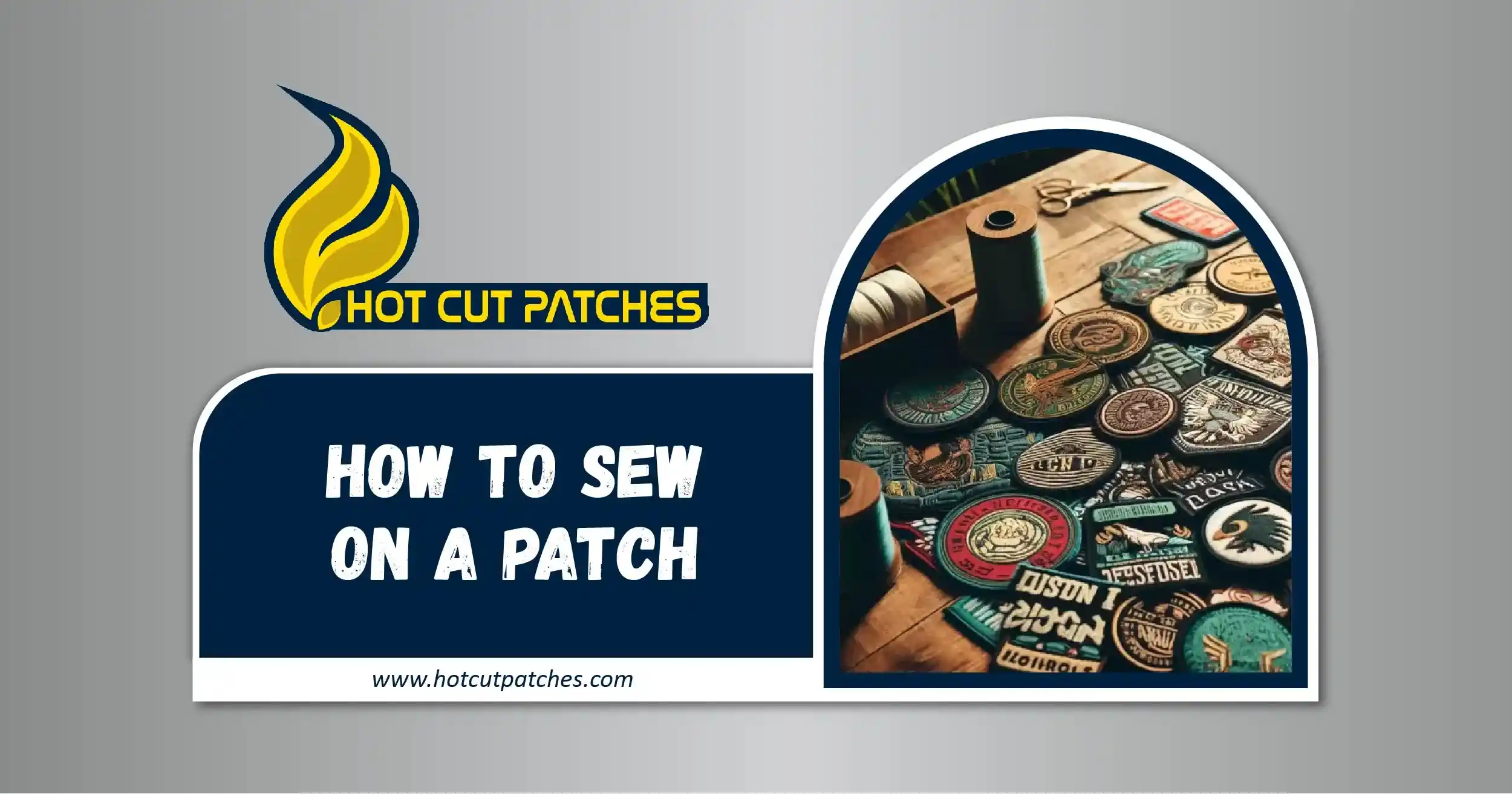Patches have become a staple for customizing clothing, bags, and accessories. Whether you’re personalizing your denim jacket, backpack, or hat, knowing how to sew on a patch can save you time and ensure that your custom patches last for years. While some patches come with adhesive backing for an easy iron-on solution, sewing them on offers greater durability and a professional finish.
In this guide, we’ll break down how to sew on a patch by hand, covering everything from preparation to finishing touches. Whether you’re working with custom embroidered patches, custom leather patches, or even custom PVC patches, this method will ensure your patch stays secure and looks pristine.
Why Sew On a Patch?
Patches can be attached in several ways, including ironing, gluing, or using custom velcro patches. However, sewing remains the most reliable method for long-term durability. While iron-on patches are quick and easy, they may lose adhesion over time, especially if you wash the garment frequently. Sewing the patch ensures it remains securely in place, even through multiple washes, wear, and tear.
Another advantage of sewing is that it works on any patch material. Whether you’re working with a custom sew-on patch or a custom iron-on patch that needs reinforcement, stitching will provide that extra level of security that adhesive can’t match.
Materials You’ll Need
Before diving into the process, gather the following materials:
Patch: Your custom patch, whether embroidered, leather, PVC, or woven.
Thread: Choose a thread that matches or complements the patch’s border for an invisible stitch. For a decorative touch, you can use contrasting thread.
Needle: A standard sewing needle is suitable for most patches. For thicker materials like leather, use a heavy-duty needle.
Scissors: For cutting thread.
Pins or Fabric Glue: To hold the patch in place while you sew.
Thimble (optional): Protects your fingers from the needle while sewing through thick materials.
Step-by-Step Guide to Sewing on a Patch
1. Position Your Patch
The first step is deciding where to place your patch. This might depend on the garment and the overall design you’re aiming for. Common placements include the chest, sleeve, back of jackets, or sides of bags. Once you’ve chosen the spot, pin the patch in place or use a dab of fabric glue to hold it steady while sewing.
For a professional look, ensure the patch is straight and positioned symmetrically. If you’re sewing multiple patches, leave enough space between them for a clean, uncluttered appearance.
2. Thread the Needle
Next, select your thread. If you want the stitching to blend in, match the thread color to the border of the patch. For a contrasting look, choose a different color thread that stands out against both the patch and the garment.
Once you’ve chosen your thread, cut a length of about 18 inches. Thread the needle and tie a knot at the end of the thread to prevent it from slipping through the fabric.
3. Start Sewing
Begin sewing from the inside of the fabric, so the knot is hidden on the underside. Push the needle through both the fabric and the edge of the patch. For the neatest results, aim to catch only the border of the patch in your stitches. This helps avoid distorting the design and keeps the patch flat against the fabric.
4. Use a Basic Stitch or Whip Stitch
There are two common types of stitches you can use to sew on a patch: the running stitch or the whip stitch.
Running Stitch: This is the simplest stitch where the needle passes through the fabric and patch in a straight line. Bring the needle up through the fabric, pass it over the edge of the patch, and push it down through the fabric again. Repeat this process, leaving even spaces between stitches.
Whip Stitch: This stitch wraps around the edge of the patch. After pushing the needle up through the fabric, bring it around the edge of the patch and pass it down through the fabric again. This stitch is slightly more decorative and can add texture to the border of your patch.
Whichever stitch you choose, ensure your stitches are small and even for a clean, professional finish.
5. Stitch Around the Patch
Work your way around the entire patch, stitching close to the edge. For irregularly shaped patches, take extra care on the corners or curves, as these areas are more prone to lifting. Adjust your stitches accordingly to keep the patch flat and secure.
If the patch has a thick border, you may need to sew just inside the border to ensure the patch stays securely fastened.
6. Knot and Finish
Once you’ve sewn all the way around the patch, finish by tying off the thread. Push the needle through the fabric one last time, but instead of pulling it through completely, loop the thread and tie a knot on the underside of the fabric. Trim any excess thread with scissors.
To give your patch extra security, you can add a few small stitches on the corners or around the border.
Tips for Different Patch Types
Custom Embroidered Patches: These patches often have thicker borders, which makes them easier to sew. Use a matching thread to keep the stitches invisible, or opt for a contrasting color for a decorative touch.
Custom Leather Patches: Sewing leather requires more effort. Use a heavy-duty needle and thicker thread to handle the material’s density. You may also want to pre-punch holes in the leather with an awl for easier sewing.
Custom PVC Patches: PVC patches are heavier and stiffer than fabric ones. Make sure to use strong thread and stitches spaced closely together to secure the patch properly.
Custom Woven Patches: Due to their fine detailing, be careful not to catch too much of the patch material in your stitches, as it may distort the design.
Advantages of Sewing a Patch vs. Ironing It On
While ironing a patch is a quick fix, sewing provides a longer-lasting solution. Iron-on patches rely on adhesives that can weaken over time, especially when exposed to heat, water, and friction. Sewn patches, on the other hand, are physically secured to the fabric, making them much more durable. This is especially important for patches applied to frequently worn garments like jackets, uniforms, or bags.
Additionally, some patches, like custom leather patches and custom PVC patches, are not suitable for ironing and require sewing for a permanent attachment.
Conclusion
Sewing a patch may seem intimidating at first, but with a little practice, it’s a simple and rewarding process. Whether you’re attaching a custom embroidered patch to a jacket or reinforcing a custom iron-on patch, the sewing method ensures that your patch stays securely fastened for years to come. By following these steps and using the right materials, you’ll achieve a professional finish that’s both stylish and durable.







